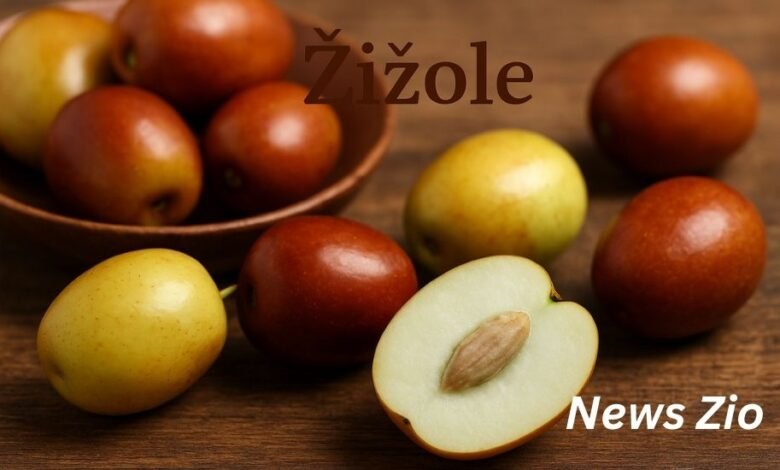Žižole: Benefits, Uses, and Wellness Secrets of the Jujube Fruit

Among the many hidden treasures of Mediterranean orchards, one fruit often sparks curiosity for both its exotic taste and traditional value: the žižole. Known globally as the jujube fruit (Ziziphus jujuba), žižole carries a history that bridges Eastern medicine and Dalmatian tradition. Its crisp texture when fresh, chewy sweetness when dried, and health-promoting qualities have made it beloved in folk practices and modern wellness circles alike.
In this article, we’ll explore the žižole benefits, its diverse žižole uses, cultural heritage, nutrition facts, and how you can enjoy it in your kitchen today.
What Are Žižole?
Žižole, locally cherished in Dalmatia and surrounding Mediterranean regions, are the same fruit recognized worldwide as jujube or red date. Belonging to the buckthorn family (Rhamnaceae), this fruit has been cultivated for over 4,000 years, with origins traced back to China.
When freshly picked, žižole resemble small apples, crisp and refreshing with a hint of tartness. Once dried, they transform into wrinkled, date-like fruits bursting with concentrated sweetness and nutritional potency.
In Croatia, žižole are often associated with autumn, celebrated during local festivals, and preserved in jams, rakija (fruit brandy), and liqueurs.
Nutritional Value of Žižole
One of the main reasons žižole gained such popularity across cultures is its nutrient-rich composition.
-
Calories: ~79 kcal per 100 g (fresh)
-
Vitamin C: ~69 mg per 100 g — nearly equivalent to citrus fruits, making žižole excellent for immunity.
-
Fiber: A significant source of dietary fiber for digestive health.
-
Carbohydrates: Natural sugars that provide quick energy.
-
Other compounds: Antioxidants such as flavonoids, polysaccharides, and triterpenic acids contribute to its therapeutic potential.
This combination makes žižole a low-calorie, high-vitamin snack that supports overall wellness.
Žižole Benefits
1. Antioxidant and Anti-inflammatory Effects
Žižole is rich in bioactive compounds such as flavonoids and polysaccharides that fight free radicals and reduce inflammation. These antioxidants protect against cellular damage, potentially lowering risks of chronic diseases.
2. Immune System Support
Thanks to its high vitamin C content, žižole naturally strengthens immunity. Traditionally, it has been consumed during seasonal changes to fend off colds and fatigue.
3. Digestive Health
The fruit’s fiber content helps regulate bowel movements, supporting gut health. Dried žižole are often steeped in teas to soothe digestive discomfort.
4. Stress Relief and Better Sleep
In traditional Chinese medicine, jujube seeds have been prized for their sedative and calming properties. While the fruit itself is gentler, teas made from žižole are often promoted as natural sleep aids.
5. Heart and Metabolic Wellness
Some research suggests jujube may help regulate blood pressure, cholesterol, and glucose levels. Though studies are still developing, the nutrient profile hints at cardiovascular support.
6. Skin and Anti-aging Benefits
Antioxidants in žižole help combat oxidative stress, supporting healthy skin and delaying visible signs of aging. This is why žižole extracts appear in some natural beauty products.
Traditional Žižole Uses
In Dalmatia and the Mediterranean
-
Rakija and Liqueur: Žižole are fermented and distilled into a beloved autumn drink.
-
Jams and Preserves: Cooked with sugar, the fruit is transformed into a sweet spread for bread or desserts.
-
Festivals: In certain Croatian coastal towns, žižole symbolize the end of summer and are enjoyed fresh during local gatherings.
In Asia
-
Jujube Tea (Daechu-cha in Korea, Hongzao-cha in China): Made by simmering dried jujubes with ginger and honey for a soothing winter drink.
-
Traditional Medicine: Used for calming nerves, aiding digestion, and boosting vitality.
Everyday Kitchen Uses
-
Added to trail mixes or desserts as a natural sweetener.
-
Blended into smoothies for an immunity boost.
-
Steeped in hot water for a quick, vitamin-rich tisane.
How to Enjoy Žižole Today
-
Eat Fresh: Crisp, apple-like žižole are refreshing snacks in autumn.
-
Dry Them: Dried žižole store well and can be used like dates or raisins.
-
Brew Tea: Simmer dried fruit with ginger, goji berries, or cinnamon.
-
Cook with Meat or Rice: In Asian cuisine, jujubes add subtle sweetness to savory dishes.
-
Make Liqueurs or Preserves: A Mediterranean tradition that keeps the flavors alive year-round.
Safety and Side Effects
Žižole are generally safe as food. However, some considerations include:
-
Allergic Reactions: Rare, but possible, especially for those with latex-fruit allergies.
-
Interactions with Medications: Extracts or supplements may interact with sedatives or anti-seizure medications.
-
Supplements vs Whole Fruit: Whole fruit is safer; supplements vary in quality.
As with all functional foods, moderation is key, and those with chronic conditions should consult a healthcare professional.
Žižole in Modern Wellness Trends
The global trend toward natural remedies has revived interest in žižole. Superfood enthusiasts value it for immunity, calmness, and vitality. On blogs and wellness websites, žižole uses are often linked to holistic living, anti-aging regimes, and natural energy-boosting snacks.
From tea houses in Asia to organic markets in Europe, žižole continue to connect ancient traditions with modern lifestyles.
Conclusion
Žižole are more than just a seasonal treat—they represent a bridge between cultural traditions, holistic health, and modern nutrition. With their crisp bite, soothing teas, and antioxidant-rich profile, žižole are an underappreciated gem in today’s diet.
As science continues to explore their effects, one thing is certain: whether in Dalmatian jams or Asian teas, žižole will keep their place as a timeless fruit of both flavor and wellness.
For more cultural and health-focused articles like this, follow News Zio, where we bring together tradition, wellness, and lifestyle in every story.



